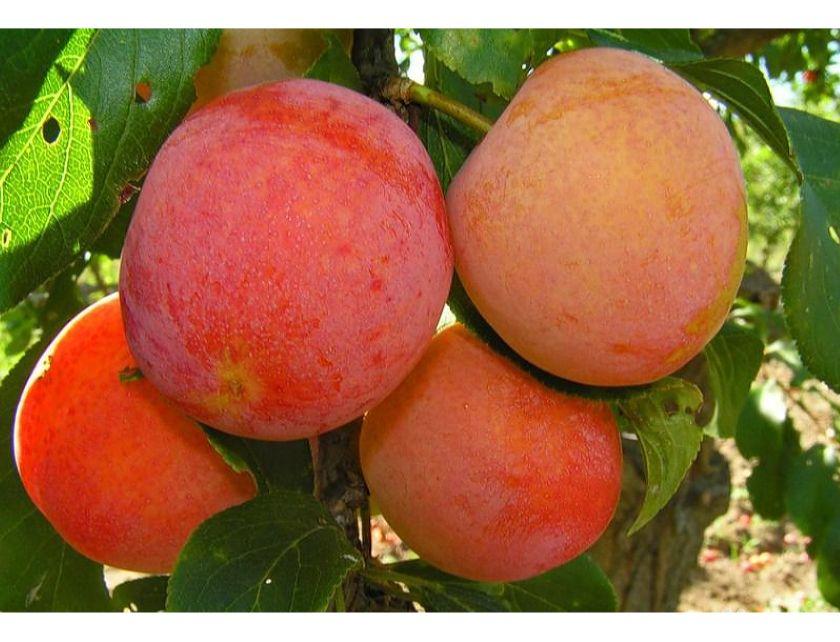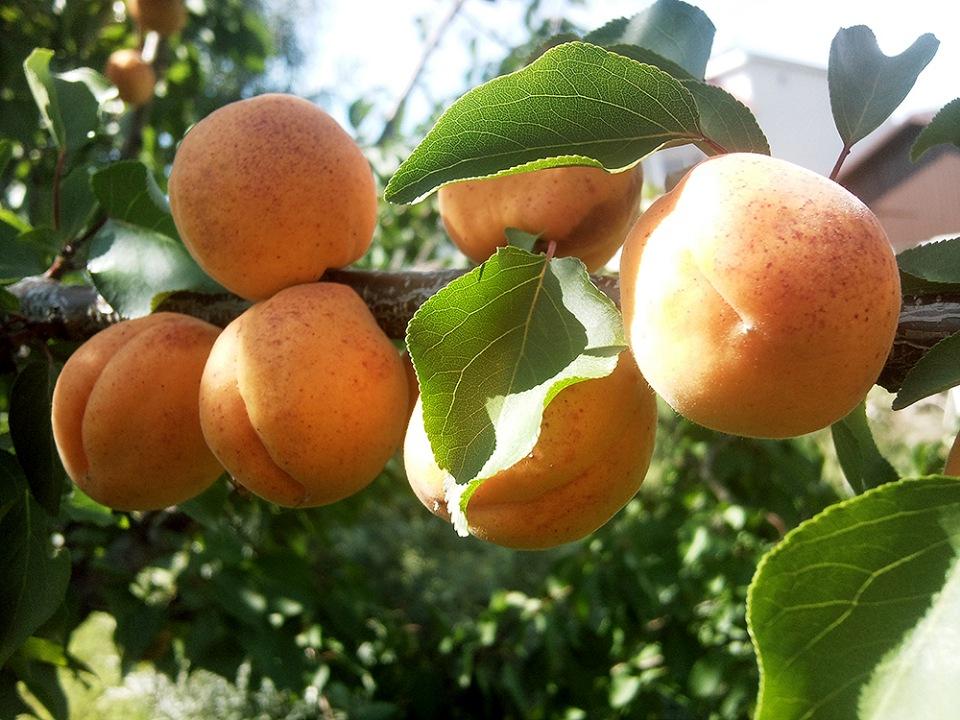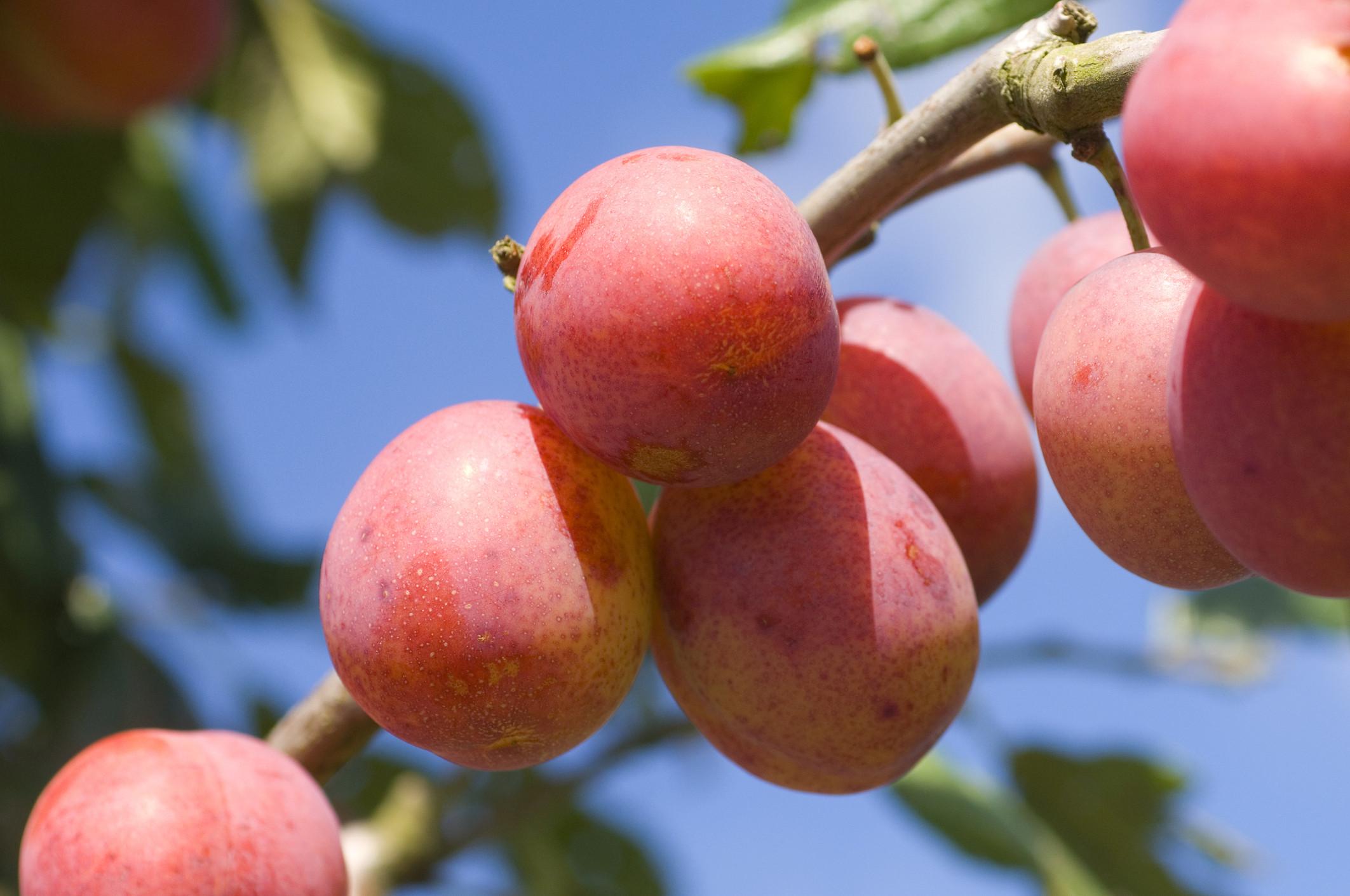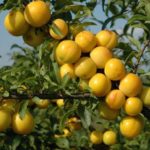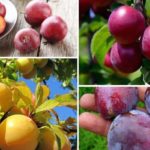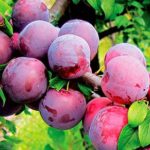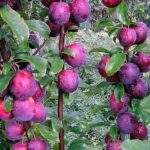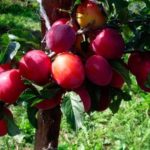Summer residents are often interested in a description of the Apricot plum variety, its planting and care. This plant is a fast-growing hybrid of plum and apricot. This variety has a rich history and is popular with many summer residents. The plant is characterized by low maintenance requirements and produces very tasty fruits. Also, an indisputable advantage of the culture is its high resistance to frost.
How the variety appeared
The apricot plum was created by crossing two different plants through cross-pollination.The author of this culture is considered to be a researcher from the University of California, Floyd Zeiger. She was released in 1989. The fruits of the crop are characterized by a combination of the delicate texture of apricot and the pleasant aroma of plum. They have a fresh taste with a slight sourness.
Its description
Today, several subspecies of such plums are known - Pluot, Aprium, Plumkot. Each of them is able to withstand strong temperature drops with ease. The crop is equally successfully grown in the north and south.
The trees are small. Their maximum height is 2.5 meters. The crown of the plant is more reminiscent of a plum tree. The tree begins to bloom in the first half of April. In this case, white flowers form inflorescences.
The leaves are smooth and wavy. They are located on small petioles. Fruit ripening occurs towards the end of summer - in July and August. This process is synchronous. In 10 days, one tree can produce 50 kilograms of fruit. All types of plants share common fruit characteristics:
- large sizes - the weight of plums varies from 30 to 70 grams;
- oval shape;
- yellow, green-pink or purple peel that has a waxy coating;
- juicy and dense pulp.
Characteristics
Apricot plum has certain characteristics. When planting a plant, you need to focus on the following criteria:
- Resistant to drought and frost. The variety is characterized by a high degree of frost resistance. The hybrid is able to withstand large temperature drops. He also tolerates heat and warm climates well. It is important to take into account that the crop does not tolerate winter thaws well.
- Requirement for pollinators. The culture is self-fertile. However, to increase productivity nearby, it is worth planting trees of similar varieties.These include Michurinskaya, Renklod Kolkhozny, Altanta.
- Productivity and fruiting. The culture is a precocious hybrid. Its fruiting begins 2-3 years after planting. Productivity increases as the tree develops. Flowering occurs in April. In this case, ripe fruits can be collected at the end of summer. 1 tree can bear 50 kilograms of plums. It is important to consider that fruit ripening occurs within 7-10 days. However, weather conditions may affect this period. It is necessary to monitor the hybrid so as not to miss the moment of ripening.
- Scope of application of fruits. Plums of this variety have a sweet taste, which makes them an excellent dessert. The fruits can be used to make jams, juices, compotes, and preserves.
- Resistance to diseases and pests. This hybrid is practically not susceptible to the development of diseases and pest attacks. To completely protect trees from the harmful effects of external factors, it is important to practice prevention.
Advantages and disadvantages
Apricot plum has many benefits, which makes it popular among gardeners. The main advantages of culture include the following:
- High resistance to frost. This makes it possible to plant the plant in the north.
- Early fruiting variety. Plum produces a harvest within 2 years after planting. Fruit ripening occurs at the end of summer.
- Large fruit sizes. Plums can reach 70 grams. In addition, they have a pleasant dessert taste. This makes the variety attractive for growing for personal and commercial purposes.
- Useful properties of fruits.
At the same time, it is important to take into account some of the disadvantages of culture:
- The content of a special enzyme in the pulp. This substance causes the development of peptic ulcers. To avoid this, you should not eat a lot of plums on an empty stomach.
- Deterioration in the presentation of fruits during transportation.
- Inability to store for a long time. Picked fruits should be consumed immediately.
Landing nuances
Planting Apricot plum is not difficult. To do this, you need to choose the right place and follow a number of rules. It is recommended to plant in early spring. This allows the culture to quickly take root. Before the onset of cold weather, the tree will have time to get stronger and adapt to local climatic conditions. In areas with mild and warm weather conditions, planting work can be carried out in the fall.
When planting a plant, it is important to choose the right place. It must meet the following criteria:
- sufficient lighting;
- absence of drafts;
- nutritious and breathable soil.
It is important to consider that the soil should not be too acidic. A lime solution will help neutralize high acidity. It must be added to the soil before planting.
It is worth remembering that tall trees that have a spreading crown cannot be planted near the Apricot plum tree. They will lead to the creation of shadows, which will negatively affect the quality of the fruit. Similar varieties of plums, apple trees and evergreen shrubs can be planted nearby.
To plant Apricot plum, you need to do the following:
- Prepare holes measuring 80x80 centimeters.
- Place a drainage layer of stone or brick at the bottom of the recess.
- Apply fertilizers - organic matter, potassium, superphosphate.
- Install the seedling. Its root system needs to be spread freely in the recess, after which the cuttings should be sprinkled with soil, watered and compacted.
- Tie the trunk to a wooden peg.
- Form an earthen roller around the trunk.It will prevent the accumulation of liquid in the root area.
How to properly care for plums
Apricot plums can hardly withstand stagnant moisture. Therefore, it needs to be planted in well-drained soil. After watering, it is necessary to loosen the soil. At the same time, watering the tree is required quite abundantly. Between moistening, the soil should dry completely.
You need to feed the tree in stages:
- In spring, Apricot plum needs nitrogen fertilizing. They need to be added to the soil in early spring, during the flowering period and after its completion. At the end of May, the tree needs to be fed with organic fertilizers. For this purpose, urea, saltpeter, and chicken droppings are used.
- In summer, nitrogen fertilizers need to be applied by spraying. Closer to autumn, you can add organic matter to the soil.
- Autumn feeding requires the use of mineral preparations. For this you should use potassium and phosphorus.
Diseases and pests
Despite its strong immunity, the plant may suffer from the development of diseases or parasite attacks. This usually happens when the rules of agricultural technology are violated. Of the diseases, Apricot plum suffers more from the following disorders:
- Hole spot - in this case, spots form on the foliage and shoots. Over time, holes form in these areas. Falling of leaves and fruits and drying of branches are also observed. Before flowering and 2 weeks after it, the crop must be treated with Bordeaux mixture.In this case, the affected fragments must be completely destroyed.
- Coccomycosis - with the development of pathology, reddish spots appear on the upper fragments of leaves. From the inside they are covered with a white coating. The leaves fall off and the fruits dry out. To cope with the pathology, you need to destroy fallen leaves, fruits and shoots. For spraying, it is recommended to use “Hom” and Bordeaux mixture.
Among the pests, fruit mites are the most dangerous. When attacked by pests, the leaves turn brown and fall off. There is also a lack of flowering. To avoid problems, the plant is treated with chemical insecticides.
Apricot plum is a unique hybrid of popular garden crops. This plant has taken over all the benefits of its parent plants. To get a bountiful harvest, the crop must be properly cared for.

